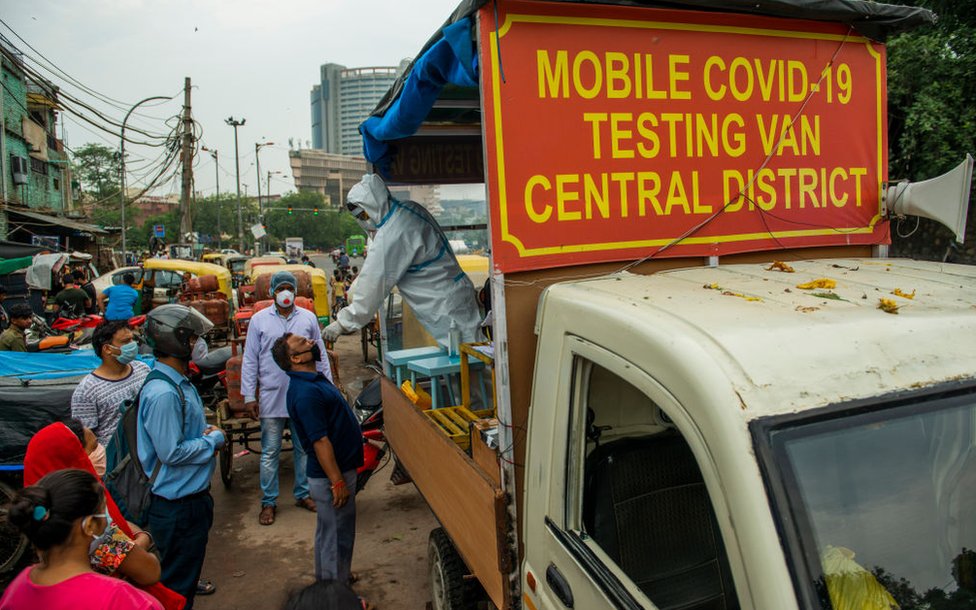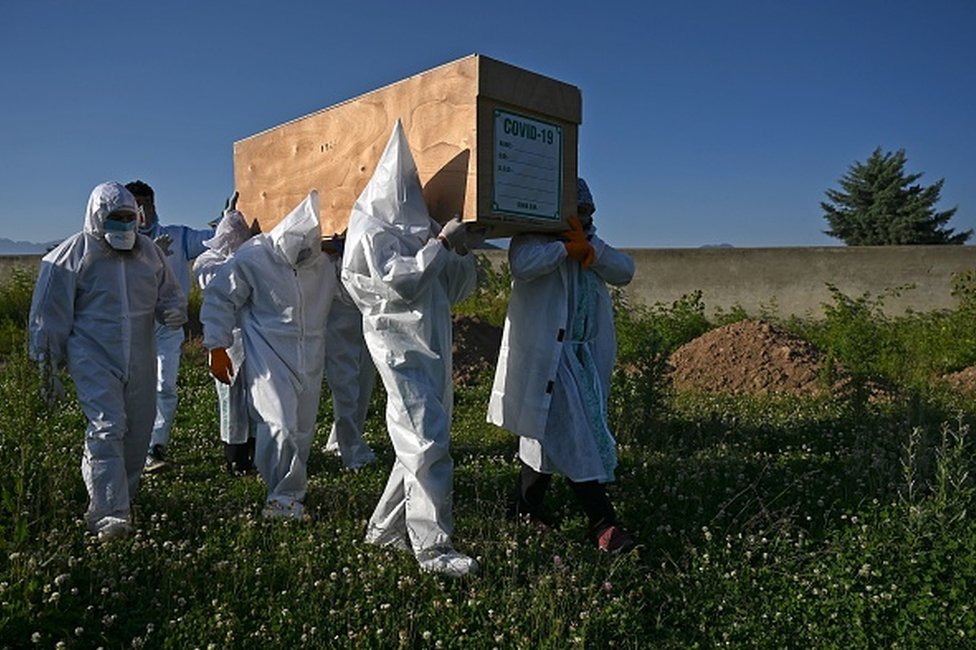Why India’s Covid problem could be bigger than we think
- Posted By: Studio
- Coronavirus
- Updated: 24 April, 2024 09:09
- 947

India is approaching the ninth month of the coronavirus pandemic with more than five million confirmed cases - the second-highest in the world after the US - and more than 80,000 reported deaths.
Infection is surging through the country in a "step-ladder spiral", a government scientist told me. The only "consolation" is a death rate - currently 1.63% - that's lower than many countries with a high caseload.
The increase in reported cases has partly to do with increased testing - but the speed at which the virus is spreading is worrying experts.
Here's why. It took 170 days for India to reach the first million cases. The last million cases took only 11 days. Average daily cases have shot up from 62 in April to more than 87,000 in September.
In the past week, India has recorded more than 90,000 cases and 1,000 deaths every day. Seven states are worst affected - accounting for about 48% of India's population.
But even as infections soar, India is opening up - workplaces, public transport, eateries, gyms - to try to repair a battered economy suffering its worst slump in decades.
The world's most draconian lockdown forced people to stay at home, shut businesses and triggered an exodus of millions of informal workers who lost their jobs in the cities and returned home on foot, buses and trains.
But the resumption of economic activity even as cases spiral suggests "lockdown fatigue", the Nomura India Business Resumption Index says.
Infection numbers may be much higher
More than 50 million Indians have been tested so far for the virus, and more than a million samples are being tested daily. But the country still has one of the lowest testing rates in the world.
So epidemiologists suggest that India's real infection rates are far higher.
The government's own antibody tests on a random sample of people nationwide estimate 6.4 million infections in early May, as compared to the recorded case count of 52,000 around that time.
Bhramar Mukherjee, a professor of biostatistics and epidemiology at the University of Michigan who has been closely tracking the pandemic, says her models point to about 100 million infections in India now.
"I think India has taken a path of cruising towards herd immunity. I am not sure whether everyone is following preventive measures like wearing masks and keeping social distancing seriously," she told me. Herd immunity is achieved when enough people become immune to a virus to stop its spread.
"This could be due to habituation, desensitisation [to the disease], fatigue, denial, fatalism or a combination of both. It feels like a thousand deaths a day have become normal."
GETTY IMAGES
As long as infections spiral, a full recovery of the economy is delayed, and hospitals and care centres may continue to get overwhelmed by surging caseloads.
K Srinath Reddy, president of the Public Health Foundation of India, a Delhi-based think tank, describes the present surge of infections as a "first tide rather than a first wave".
"The waves are moving outward from the initial points of origin, with different timings of spread and levels of rise. Together, they constitute a high tide which is still to show signs of ebbing."
Why are rates still soaring?
"With increased mobility and reduced adherence to social distancing, mask wearing and personal hygiene, the virus will soar again," says Dr Mukherjee.
A doctor in a large hospital in Jodhpur in Rajasthan told me they were seeing a surge in severely sick elderly patients who lived in joint families.
AFP
Way back in March, Dr T Jacob John, a prominent virologist, had warned that an "avalanche of a pandemic" awaited India.
In many ways, a high number of cases in a vast country with a creaky public health system was "inevitable", he says now. But, such a high number of infections could still have been avoided, he adds, blaming a badly-timed lockdown.














Comments